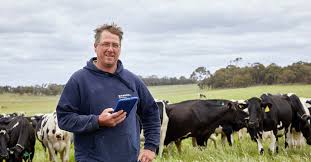Every farm financial manager has to assess the performance of his business, in order to act suitably. Various tools of financial analysis, viz., farm planning and budgeting, the balance sheet, income statement, cash flow statement, break-even analysis, etc., are available to him in this regard.
These tools are presented in five segments. This article treats the introductory part, while the others are treated in subsequent articles.
Read Also: The Best Specie of Fish to Raise for Profit
What is Planning?

Farm planning and budgeting are the most important tools of farm business analysis. The most profitable alternative enterprises are selected in the planning process by organizing the available land, labour, and capital resources into proper combinations. Any scheme of action prepared in advance to attain the set objectives is a plan.
A farm plan is a scheme for the operation and organization of farm business to get maximum net returns. Planning refers to the process of formulating a plan. In planning, we specify how land is to be allotted among alternative profitable enterprises and how limited capital and fixed family labour are most profitably combined in different periods of time to produce desired crop and livestock products.
Economic principles provide the guidelines and rules and simplify the complex decision problems of what to produce, how to produce, and how much to produce from crops and livestock enterprises, under the given set of resources. Plans give a systematic and organized procedure by exactly specifying the enterprises and their resource requirements.
In fact, a farm manager must formulate sound alternative farm plans and budgets in order to be a successful farm manager. In plans, we specify the enterprises along with their resource requirements in physical units, but in budgeting, we account for their monetary value for judging their profitability.
Need for Planning
The need for farm plans stems from the desire of the farmer to attain his set goals and objectives. New ideas and information on the technology of farms must be gathered and put into the plan for execution if the farmer aims at achieving higher returns from his given resources.
Careful examination of the resources and their efficiencies must be ensured along with minimization in wastages. Judicious use and combination of resources for producing existing and new enterprises, which have potential for furthering income and employment of family labour on a continuous time basis, must be allowed in plans.
Sources of procuring the requisite credit along with other essential inputs, marketing arrangements for the sale of output, risk and uncertainties in production and marketing, prevention of unnecessary stresses and strains in the use of resources, etc., must be considered in making good plans.
A good plan must be useful in seeing the future requirements. It must be flexible to suit the changes in the weather, market, and farm environment. It should provide food, cash, and fodder requirements in combining the crop and livestock enterprises.
There should be provision in plans for crop rotation to maintain and improve soil fertility. It should satisfy the stated objectives of the farmer and consider the inventory of the scarce resources and financial constraints.
Technical coefficients along with techniques of organizing the scarce resources and enterprises must be given due consideration in formulating the plans.
Read Also: How to Raise Catfish and Tilapia in the Same Fish Pond at the Same Time
Planning Techniques: Budgeting

Some techniques are simple, while others are more complex. Budgeting is the most informal method, whereas linear programming and non-linear programming are the most sophisticated techniques for providing appropriate solutions under certainty, risk, and constrained situations.
In the budgeting process, we estimate costs, returns, and net profit of a farmer or a particular enterprise, and hence, it helps in the advance estimation of expenses and income of a farm business. Budgets are usually prepared for a year, considering the revenue and expenditure.
When budgeting is done for a single enterprise or two enterprises, then it is called partial budgeting. If budgeting is done for all the enterprises in terms of costs, revenues, and net profits for the whole farm, then it is termed as complete budgeting, total budgeting, or whole farm budgeting.
In this process, the best combination of enterprises is judged based on the productivity of the resources and the ability of the farm operator to maximize the returns.
Budgeting has several implications in farm financial management. Farm budgets assist the farmer in exercising economic control over his farm business. They also help the lending institutions in decisions like justifying the sanction of a loan or rejection of the same.
Credit needs of the farmer in different time periods of the year are vividly shown by the budgets. Budgets also help in fixing the repayment schedules and sanction of loans at appropriate times. Thus, budgets form a basis to determine the quantum of credit to be given to a particular farm.
A. Advantages of Budgets
The following are the advantages of budgets:
- Estimation of the economic viability of agricultural development projects.
- Judging the repayment capacity of the farmer.
- Reorganizing the resources and enterprises for amortizing the loans.
- Preparation of cash-flow statements.
- Assessment of credit requirements of the farmers in different seasons of a year.
- Maximization of net returns from the farm.
Partial and Complete Budgets
The two types of budgets, i.e., partial and complete, distinctly differ from each other in the following ways:
In partial budgeting, we try to introduce minor changes, such as the use of high-yielding variety seeds, different doses of fertilizer use, etc., and their corresponding costs and returns in terms of added costs and added returns. This brings forth the impact of these minor changes on the returns of the enterprise.
In complete budgeting, we contemplate complete transformation in enterprises, bringing about desired changes in methods of production, techniques of adoption, etc. By doing so, sometimes new potential enterprises are selected, replacing the traditional ones.
In partial budgeting, only a few alternatives with a good range of profit are considered, while in complete budgeting, all possible alternatives without omission are tried, and the best one is selected in terms of profits. Partial budgeting is done for a part of the farm business only, while in complete budgeting, the entire farm is considered, and the best profitable alternatives are chosen.
Enterprise Budgeting
This is a kind of partial budgeting but strictly refers to one enterprise in terms of its importance and frequent use in farm planning. It is a prerequisite for the preparation of partial budgeting, complete budgeting, and programming models.
An enterprise budget considers the expected or average requirement of inputs and their corresponding average output, which are called technical coefficients. These technical coefficients are expressed both in physical units and value terms for a unit of a particular activity.
Such enterprise budgets are prepared for production activities on farms, which indicate returns over variable costs per unit of activity. Thus, physical input-output data along with price data on inputs and output are essential for preparing enterprise budgets.
Crop enterprise budgets relate to individual crop production activities, while livestock enterprise budgets pertain to milk, eggs, wool, mutton, etc. Several budgets are often formulated for the same enterprise or crop activity if there is a change in technical coefficients for the enterprise.
Planning and budgeting are indispensable tools for farm financial management. By carefully allocating resources, assessing risks, and evaluating profitability, farmers can make informed decisions that enhance the performance and sustainability of their businesses. Whether using partial or complete budgeting, the goal remains the same: to maximize net returns and achieve long-term success in farm business.
Do you have any questions, suggestions, or contributions? If so, please feel free to use the comment box below to share your thoughts. We also encourage you to kindly share this information with others who might benefit from it. Since we can’t reach everyone at once, we truly appreciate your help in spreading the word. Thank you so much for your support and for sharing!
Read Also: Banana Tree Care: What You Need to Know






